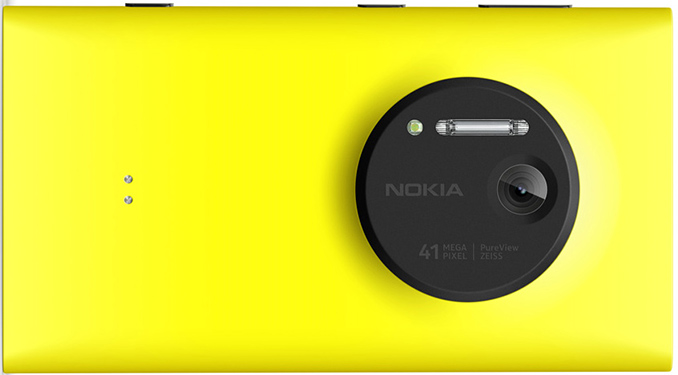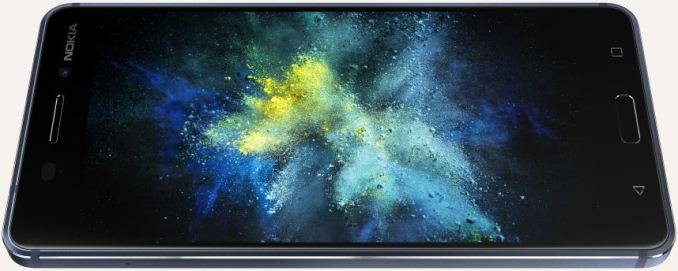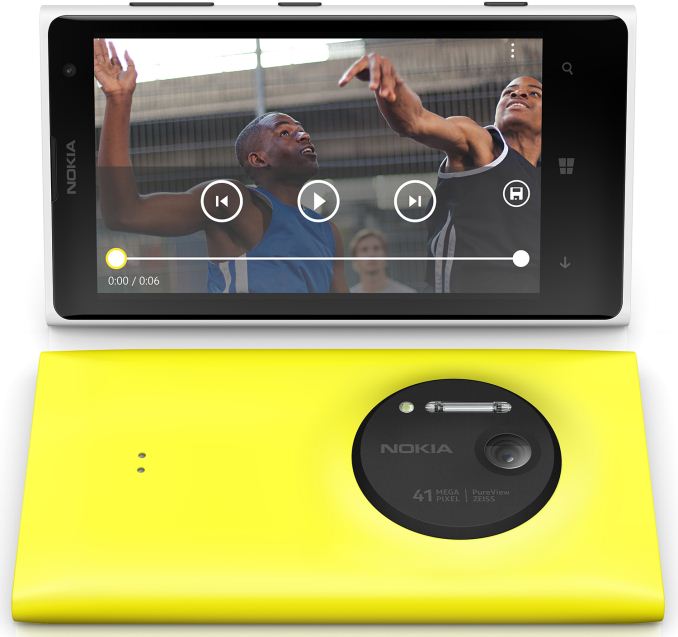Nokia Smartphones to Exclusively Use Zeiss Optics
by Anton Shilov on July 6, 2017 4:00 PM EST- Posted in
- Smartphones
- Nokia
- Android
- Zeiss
- HMD Global

HMD Global and Zeiss on Thursday announced that they had signed an agreement under which upcoming Nokia-branded smartphones will use Zeiss-branded optics exclusively. The companies said that they would co-develop imaging capabilities of future handsets, but did not elaborate when to expect actual devices on the market.
The collaboration announcement between HMD and Zeiss has a number of layers, all of which seem to be significant. First off, Nokia’s future phones will use optics co-developed with a renowned designer of lenses. The important upshot here is that HMD is actually investing in the development of custom capabilities for its Nokia phones. Second, the two companies are talking about “advancing the quality of the total imaging experience”, involving optics, display quality, software, and services, but do not elaborate. From the announcement, it looks like HMD will put R&D efforts not only into optics but will design its own software enhancements to improve imaging capabilities beyond those offered by vanilla Android. A good news here is that certain future phones carrying the Nokia brand are not going to rely completely on off-the-shelf hardware, software, and reference designs. Third, HMD announced that imaging is one of the areas that it considers important for its future smartphones. Finally, Zeiss will be used on Nokia-branded devices exclusively, which means that future halo smartphones from Microsoft (if the company decides to launch them) will have to rely on other optics.
Nokia started to work with Zeiss (which was called Carl Zeiss then) more than 10 years ago. The first handset to use Zeiss optics was the N90 released in 2005, which set some standards for smartphone imaging capabilities for a long time. The two companies collaborated for a long time and introduced a number of smartphones with advanced cameras. The culminations of their work were the Nokia 808 PureView and Lumia 1020 phones released in 2012 and 2013 (respectively) and featuring a 41 MP sensor along with an oversized Carl Zeiss-branded optics assembly and providing features like lossless digital zoom and pixel oversampling. After the acquisition of Nokia’s smartphone business by Microsoft in 2013, the latter released a number of handsets featuring Zeiss Tessar four-element lenses as well, but eventually, Microsoft lost interest in smartphones in general and decided not to prolong its agreement with Zeiss. As a result, Microsoft’s latest Lumia 650 smartphone does not use Zeiss-branded optics.
HMD and Zeiss aim to co-develop “standard-defining imaging capabilities” for smartphones, but they do not disclose when the first Android-based Nokia handsets with Zeiss optics are to arrive in the market. Keep in mind that the agreement between HMD and Microsoft does not cover the PureView (imaging) IP nor the ClearBlack (display enhancements) IP that remain at Microsoft. Therefore HMD will have to develop its image processing technology and LCD screen filters to match features of previous-gen Nokia smartphones when it comes to photography and display quality. It is unclear how much time this work will take, but the good news here is that the works are either underway or about to start.
Related Reading:
Source: HMD Global












33 Comments
View All Comments
Ananke - Tuesday, July 18, 2017 - link
That's the Asian business way - they send you a dozen great samples, than you sign a supplier contract, lay off your workers and outsource everything, so you Asian partners can start shipping you billions of $ ultimate crap that has nothing in common with the first samples :) :). It does take at least several years for the contract to expire though, and the end users to abandon you, to realize that selling expensively worthless stuff is not the way to conquer American market...boozed - Thursday, July 6, 2017 - link
"Nokia to Licence Zeiss Trademark"Flunk - Thursday, July 6, 2017 - link
Yupboozed - Thursday, July 6, 2017 - link
Or perhaps even "Nokia Licencee to also Become Zeiss Licencee"xype - Friday, July 7, 2017 - link
That’s more accurate. Nokia and Zeiss are only name brands with these products. Doesn’t mean it won’t be any good, we’ll have to wait and see.Gunbuster - Friday, July 7, 2017 - link
They should go for the Nascar approach and get even more Licence and cert logos to slather on! Perhaps B&O for audio, Get it THX certified, HDR10?Tams80 - Friday, July 7, 2017 - link
Don't forget Dolby Digital! Old Nokia's used to have it as well, so it'll fit in perfectly.azrael- - Friday, July 7, 2017 - link
Will this be like Huawei and Leica? I guess so...melgross - Friday, July 7, 2017 - link
Quite frankly, I don’t see this as being as big a deal as they present it as being. When it comes to multi thousand dollar lenses, they Zeiss is one of the best. But when it comes to the $5 lenses used in smartphone cameras, they offer no advantage.They are also no known for software of this kind, nor are they known for LCD or OLED screen technologies. Neither are they know for sensor design.
This is the same thing as using the name Leica or Schneider on a smartphone lens. There has been no evidence that these cameras take pictures that are better because of them.
I’m skeptical that there will be any significant improvements with the partnership.
Tams80 - Friday, July 7, 2017 - link
Unless they are prepared to go with a big camera module again, then there is no way they are going to improve image quality much over the competition. They can then choose to make it a hump, or make the rest of the phone deeper, but the module will still need to be there.As I understand it, old Nokia's (read Nokia) past agreement with Zeiss really helped them with the 41 MP PureView sensor, as that actually needed lenses that weren't readily available.